Abstract
1. 4-Hydroxypropranolol, a metabolite produced after oral administration of propranolol, has been shown to be a β-adrenoceptor blocking drug. It is of similar potency to propranolol in antagonizing the effects of isoprenaline on heart rate and blood pressure in cats and against isoprenaline protection of guinea-pigs from bronchospasm. It is not cardioselective.
2. In rats depleted of catecholamine 4-hydroxypropranolol produced an increase in heart rate, suggesting that it has intrinsic sympathomimetic activity.
3. In anaesthetized dogs 4-hydroxypropranolol produced a decrease in heart rate and dP/dt and an increase in A-V conduction time at doses within the range 0·09-1·25 mg/kg. These effects are a result of β-adrenoceptor blockade. In dogs depleted of catecholamines these same doses produced an increase in heart rate and dP/dt and a decrease in A-V conduction time. These responses were antagonized by propranolol, and were due to the intrinsic sympathomimetic activity of the compound. At higher doses (5·25 and 13·25 mg/kg) a further dose dependent decrease in heart rate and dP/dt and an increase in A-V conduction time occurred. This trend was also seen in animals depleted of catecholamines. These changes represent membrane stabilizing activity of 4-hydroxypropranolol.
4. 4-Hydroxypropranolol is a potent β-adrenoceptor blocking drug with both intrinsic sympathomimetic activity and membrane stabilizing activity.
Full text
PDF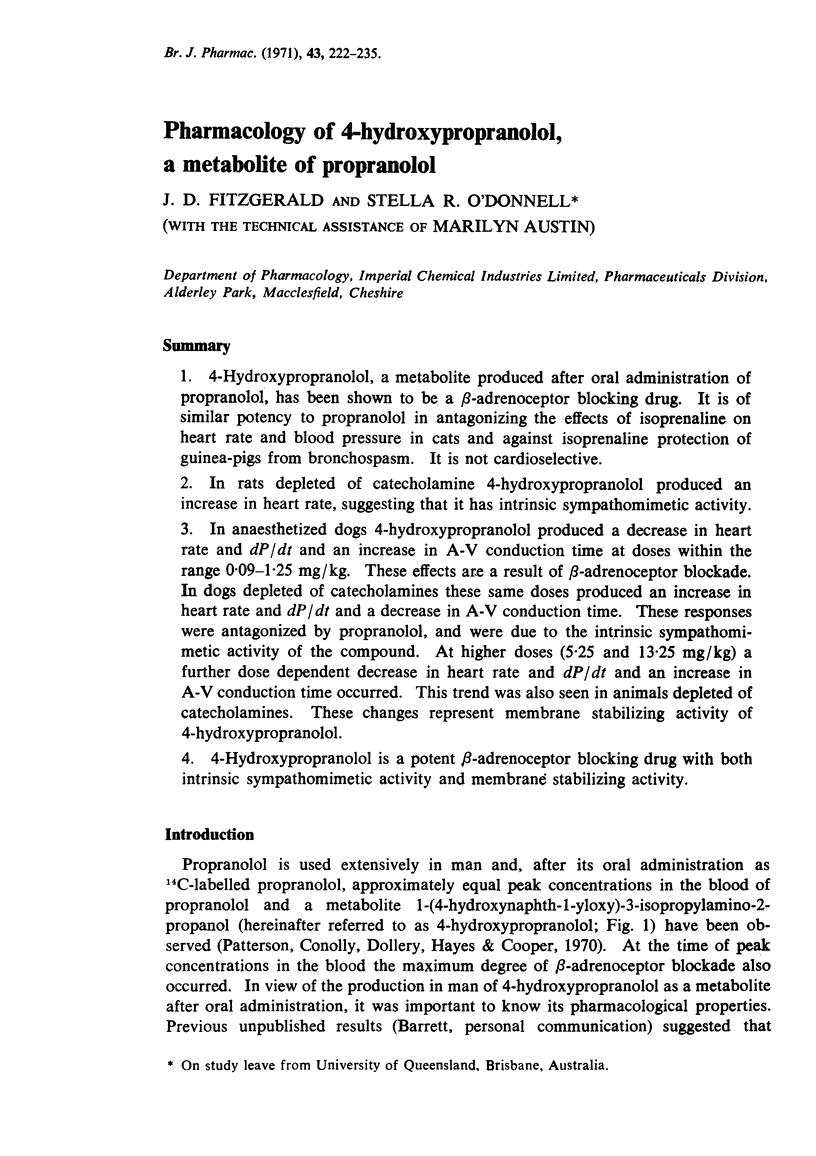
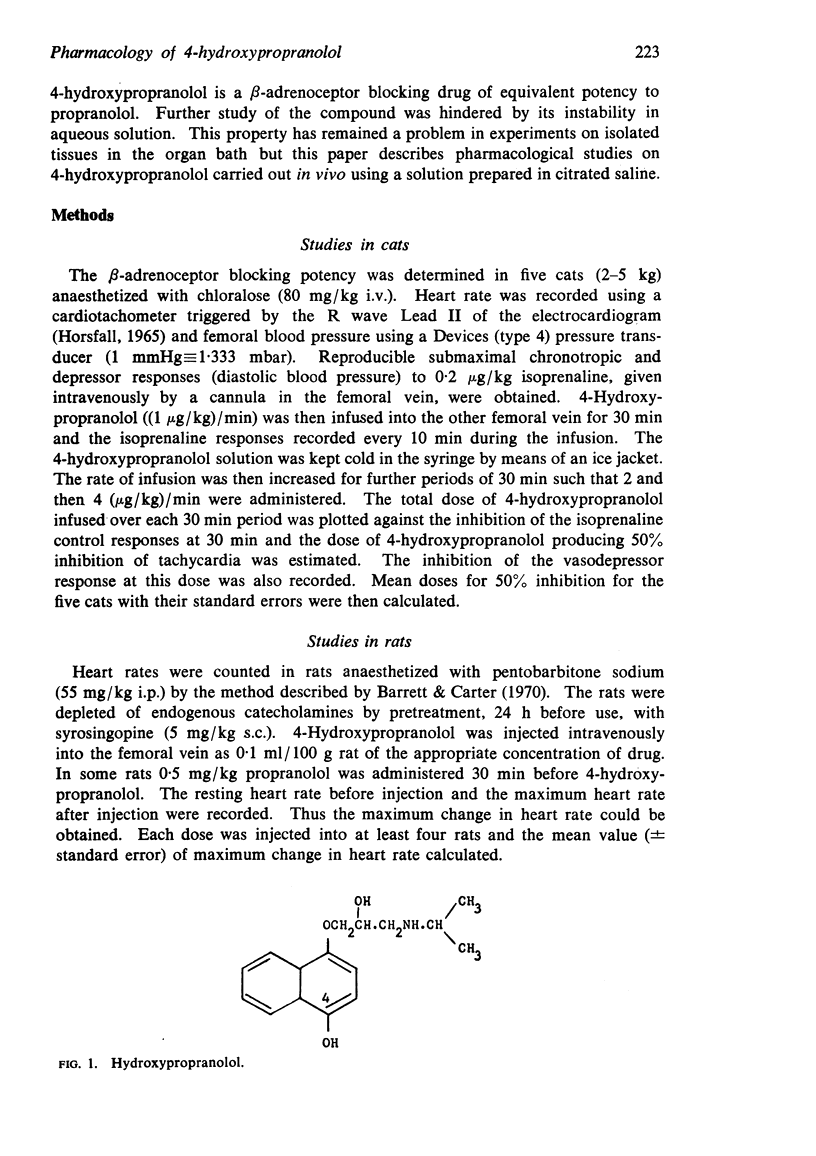
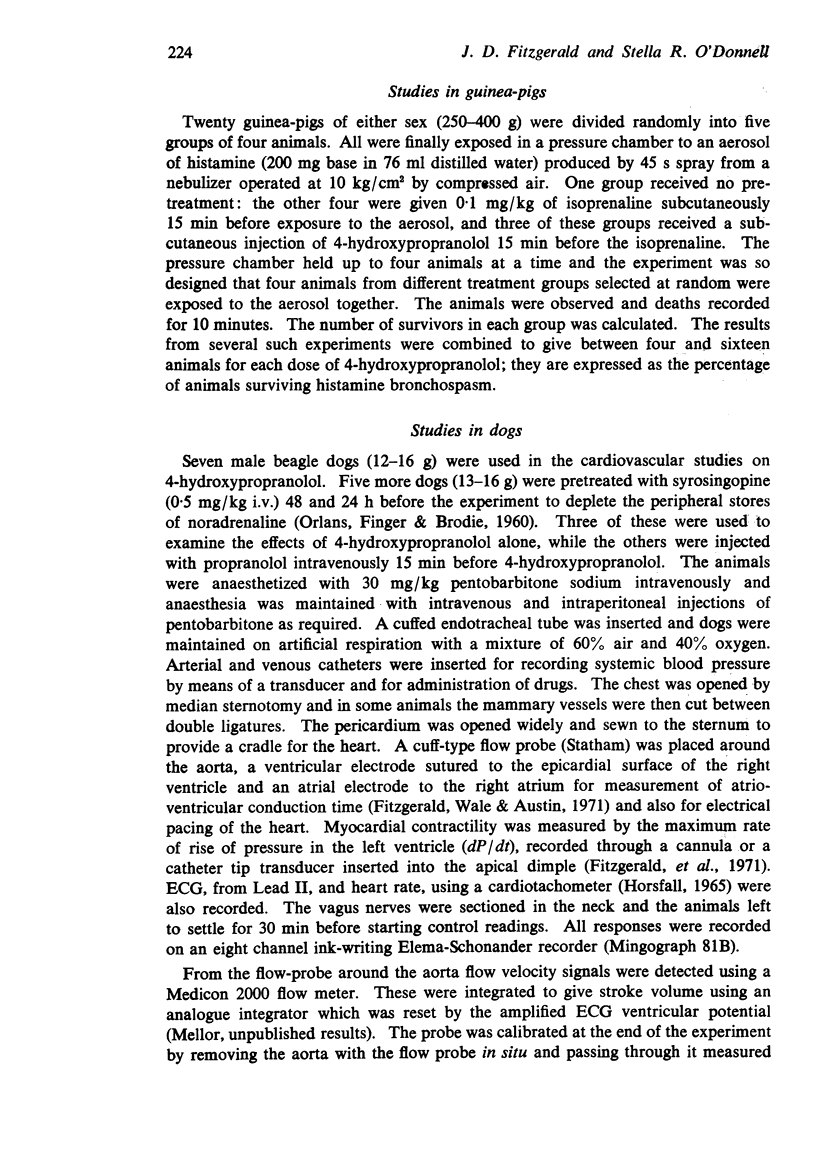
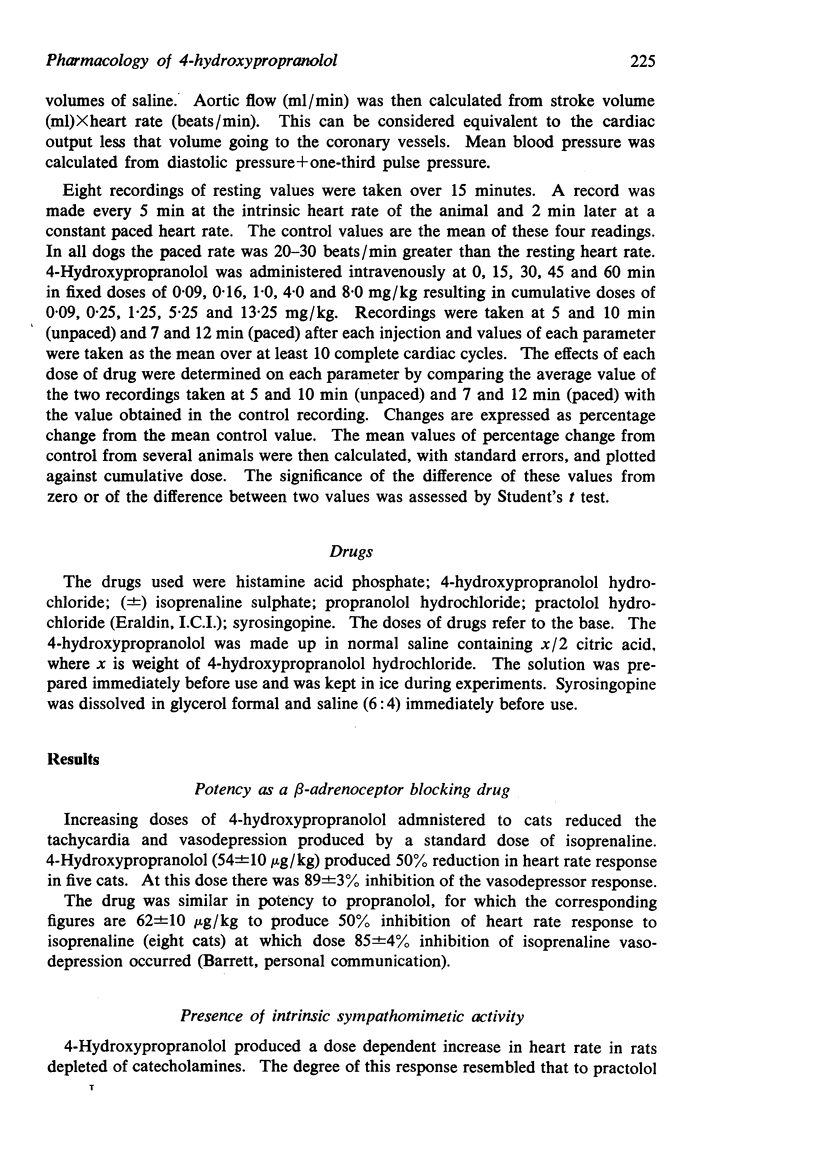
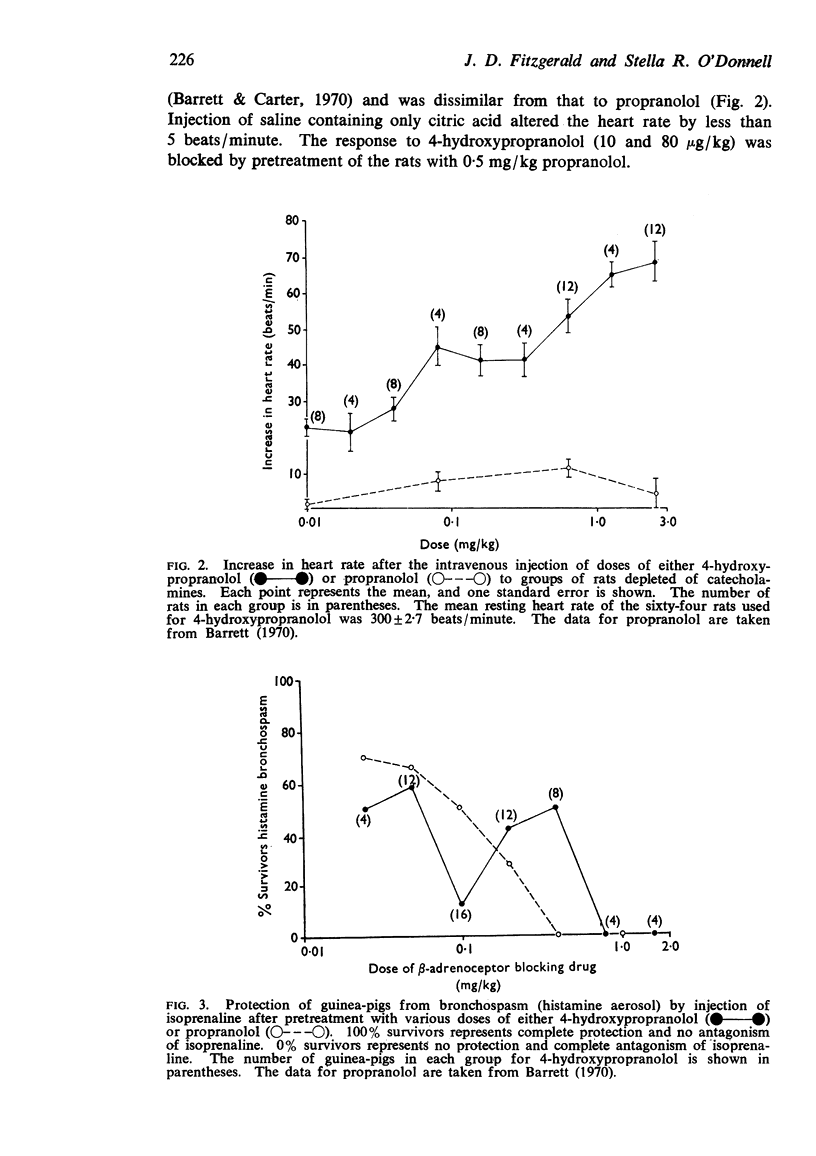
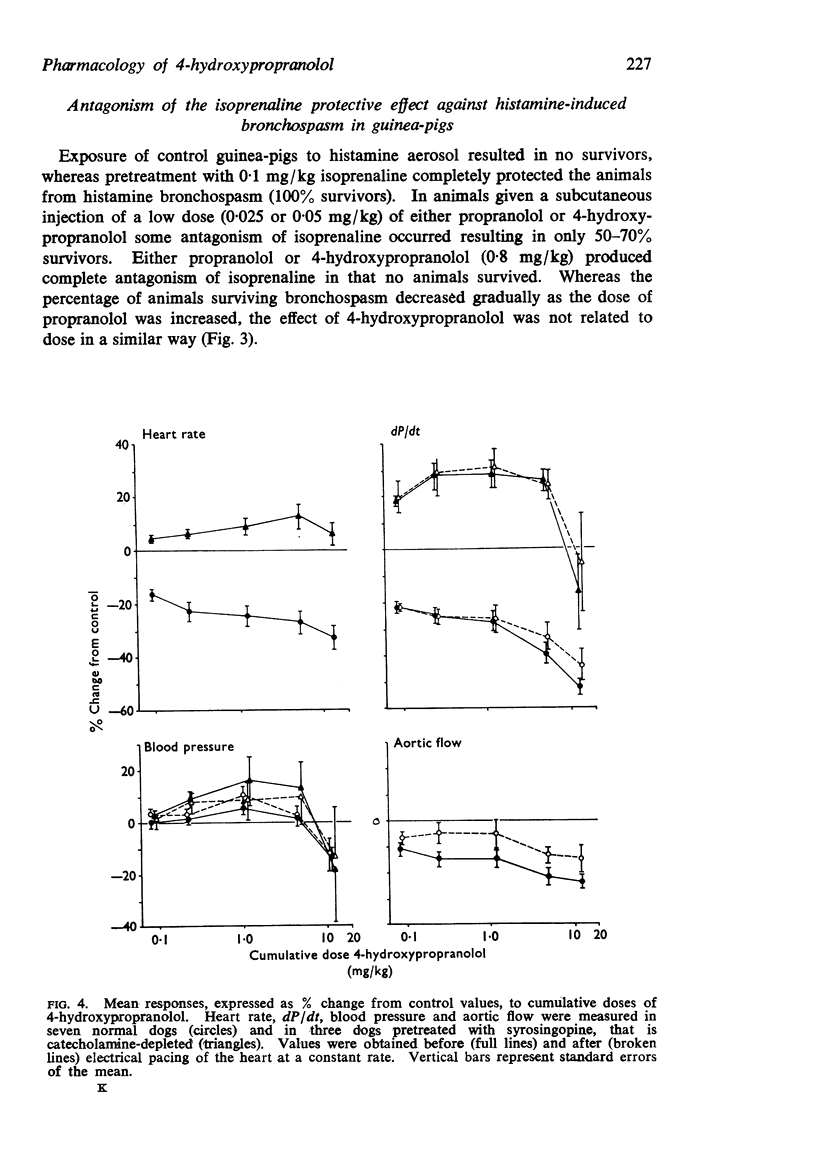
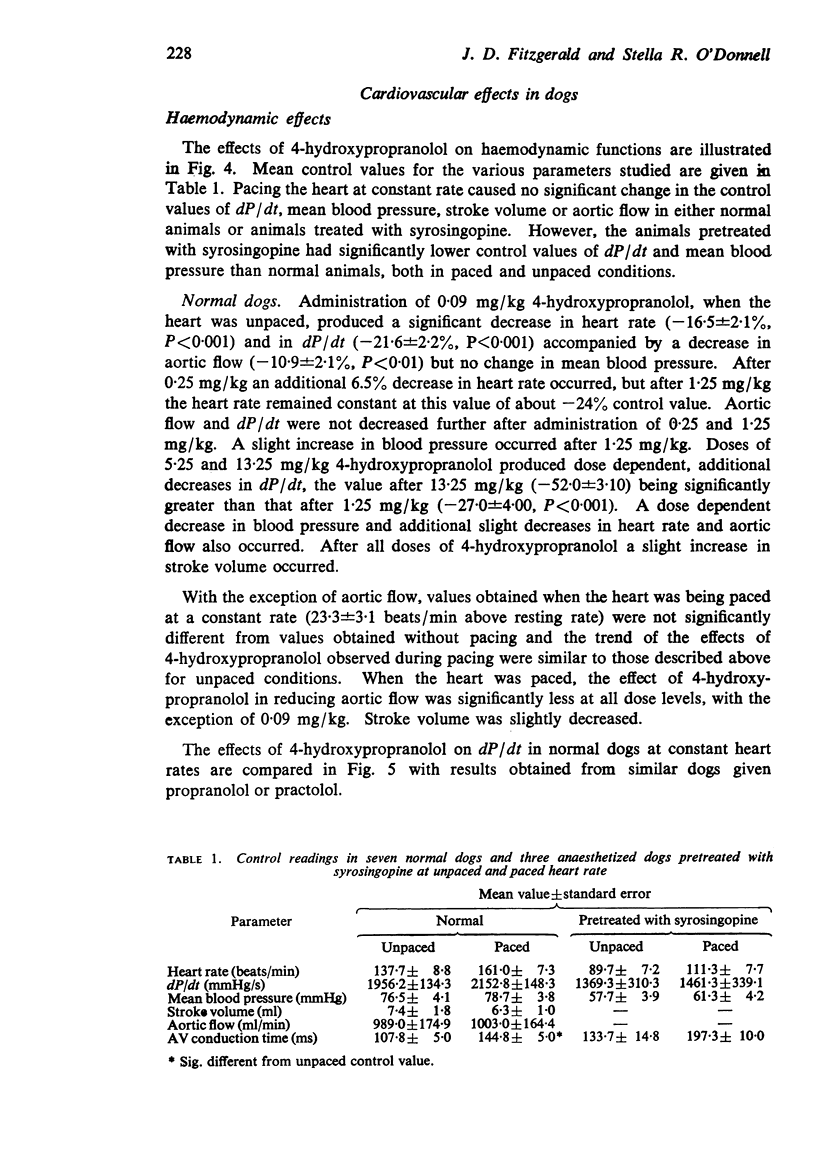
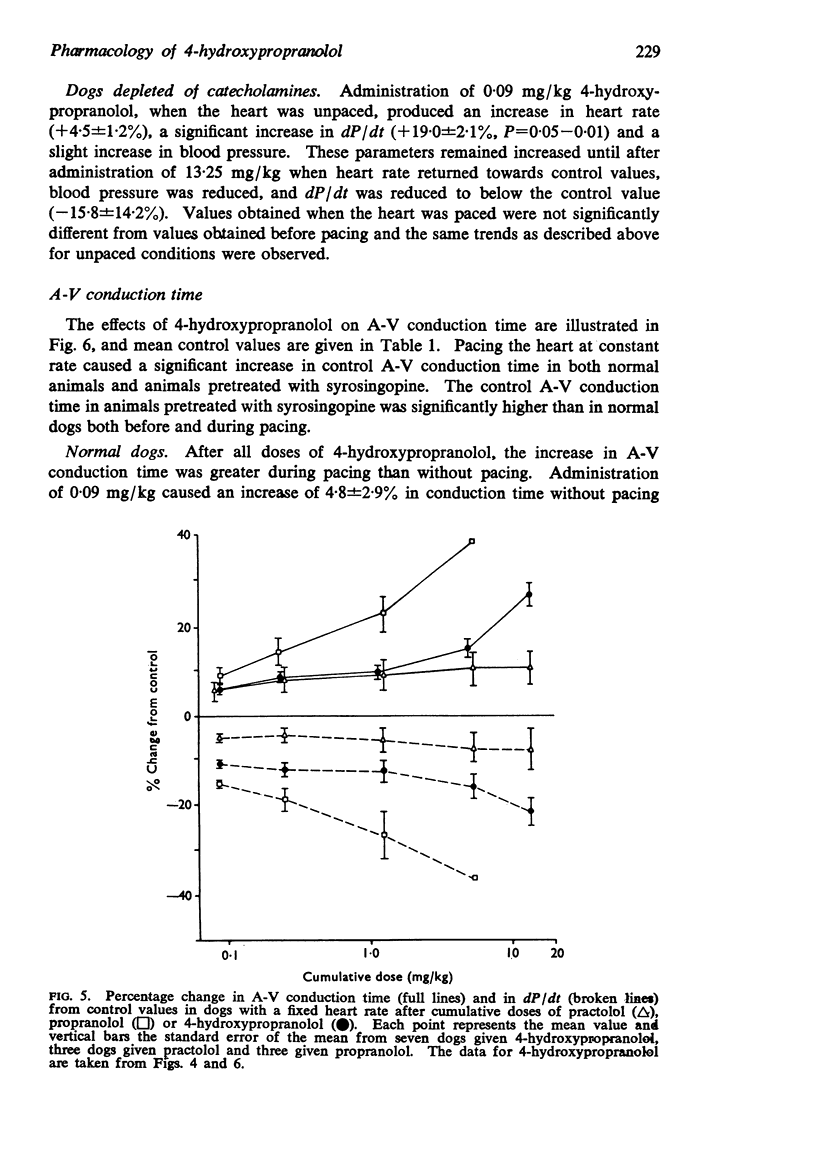
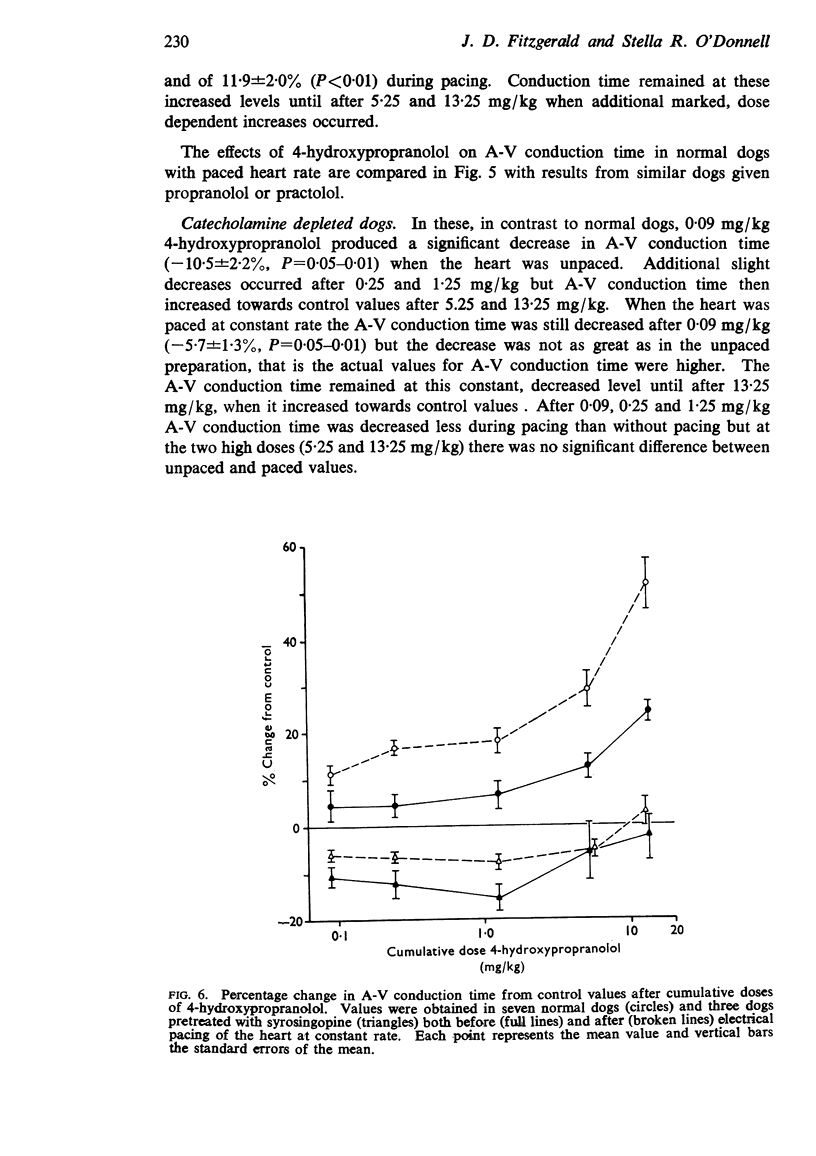
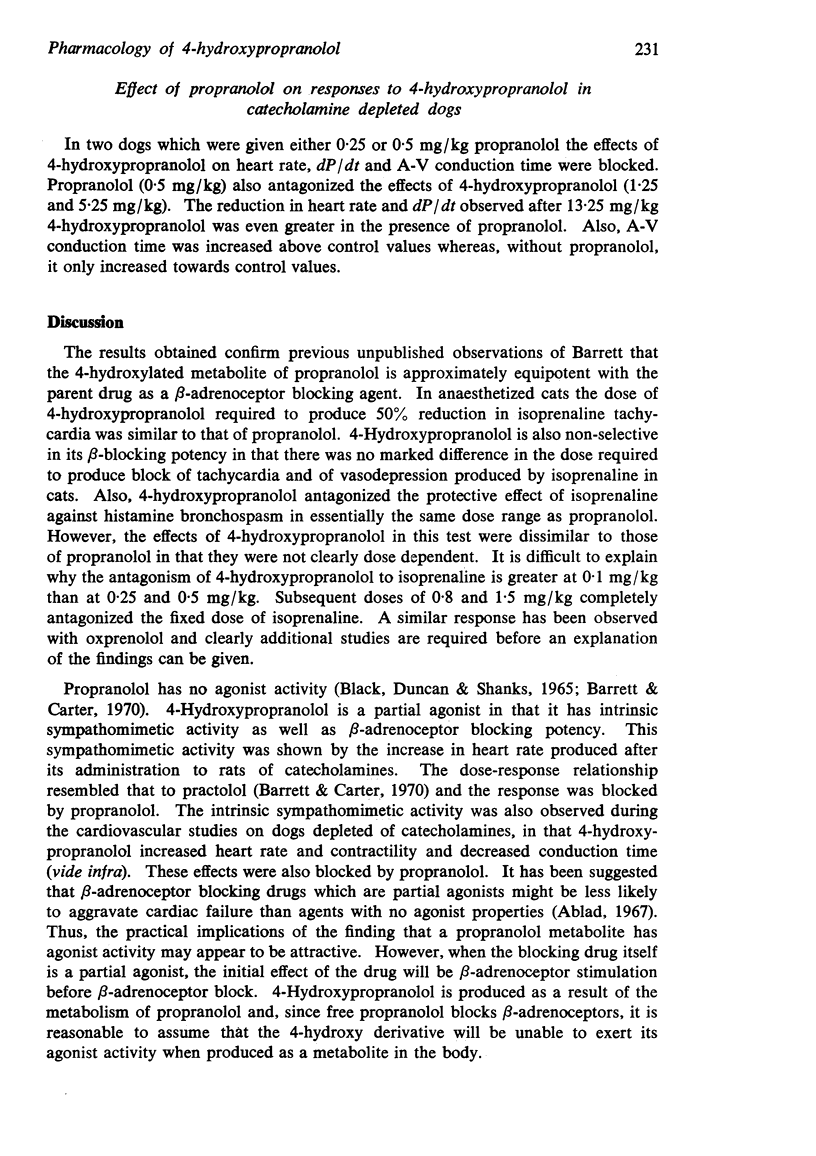
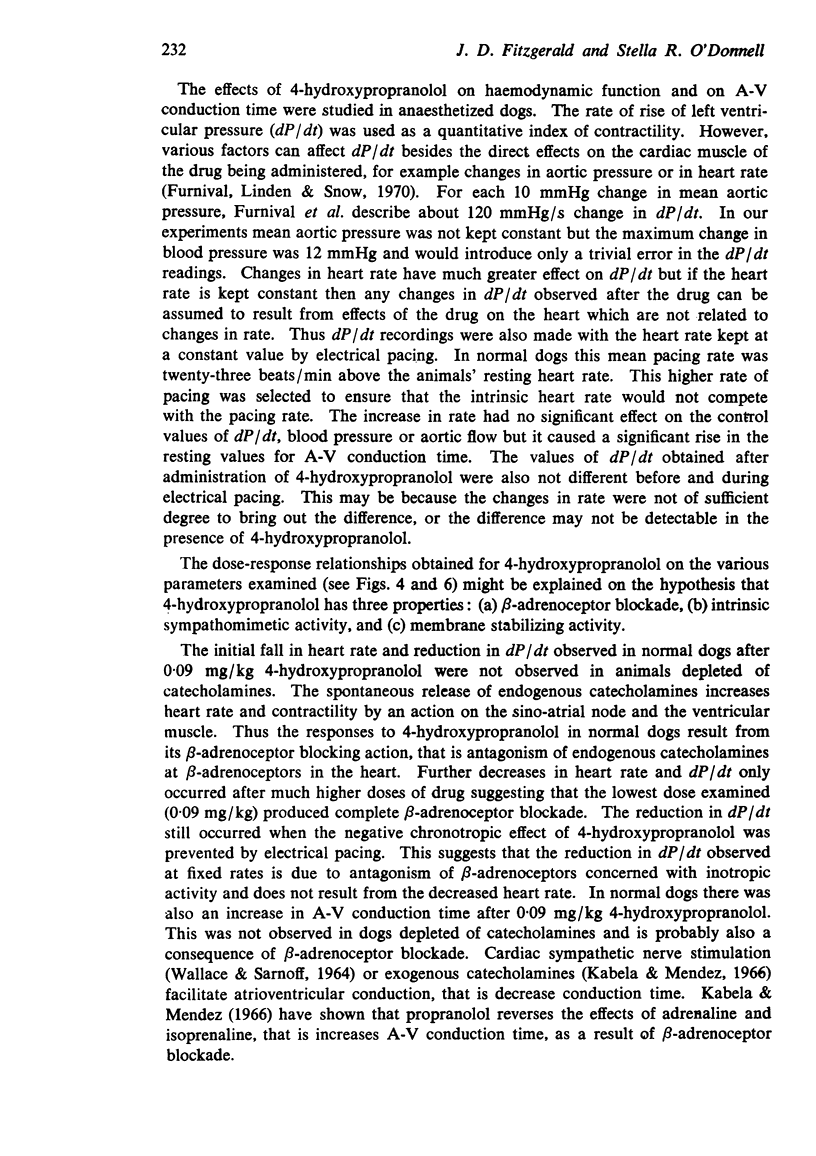
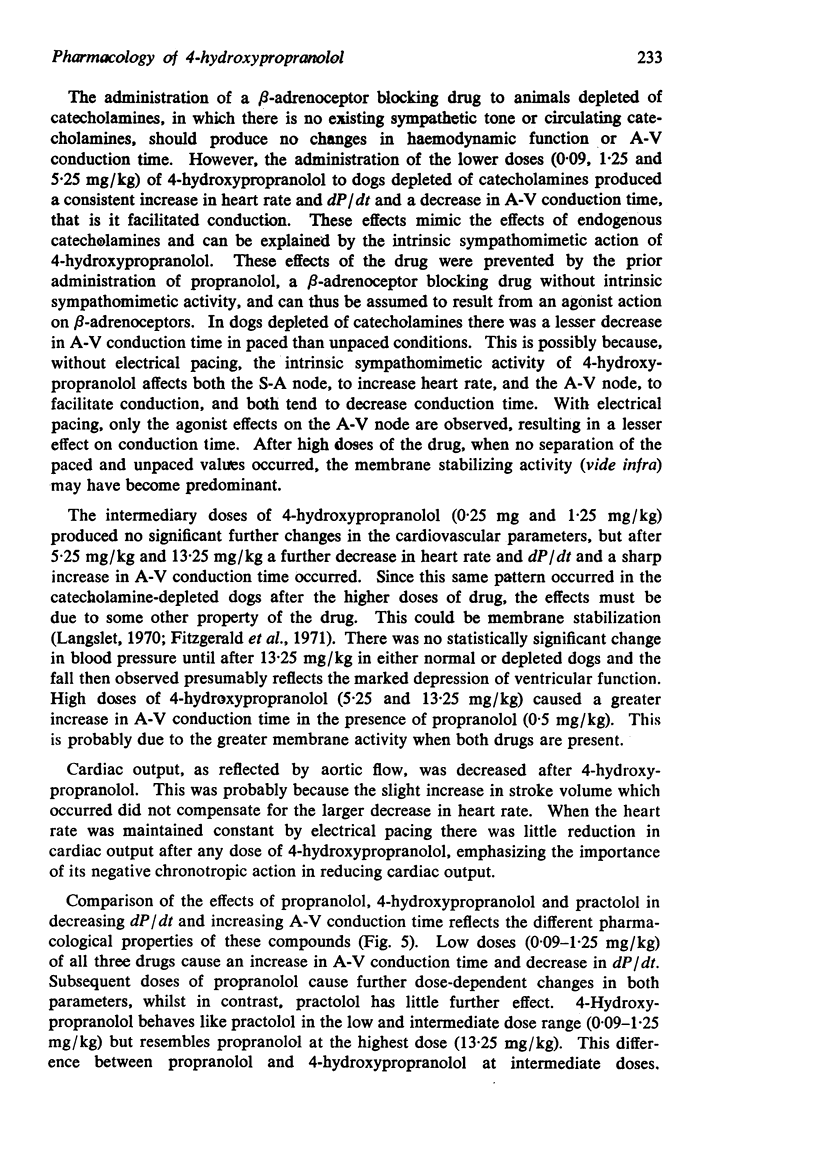
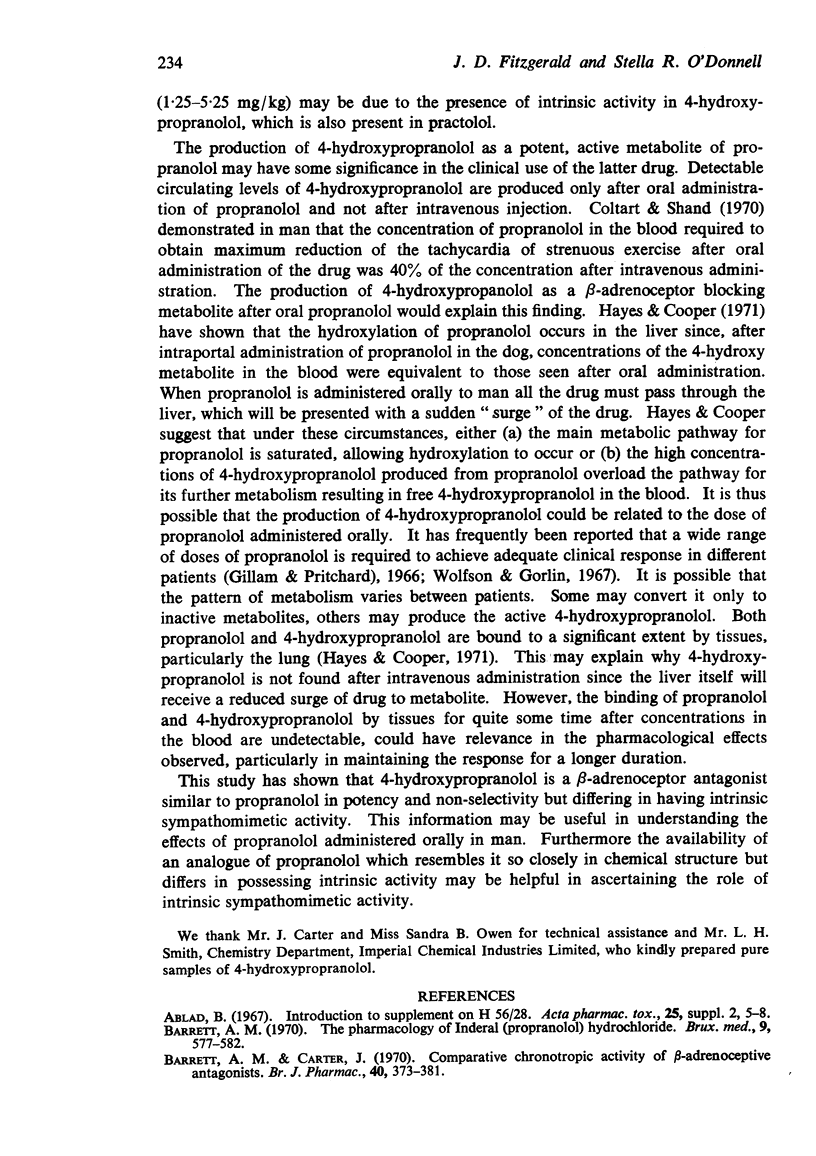
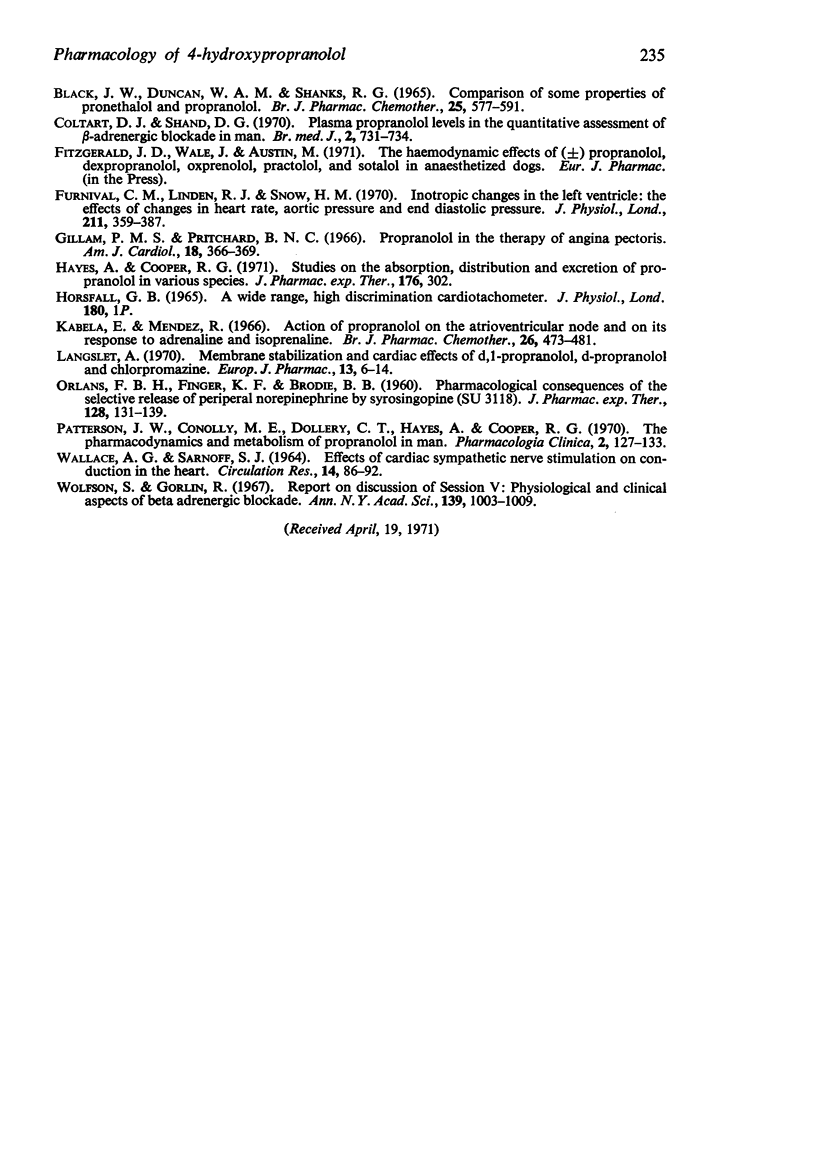
Selected References
These references are in PubMed. This may not be the complete list of references from this article.
- Barrett A. M., Carter J. Comparative chronotropic activity of beta-adrenoceptive antagonists. Br J Pharmacol. 1970 Nov;40(3):373–381. doi: 10.1111/j.1476-5381.1970.tb10619.x. [DOI] [PMC free article] [PubMed] [Google Scholar]
- Black J. W., Duncan W. A., Shanks R. G. Comparison of some properties of pronethalol and propranolol. Br J Pharmacol Chemother. 1965 Dec;25(3):577–591. doi: 10.1111/j.1476-5381.1965.tb01782.x. [DOI] [PMC free article] [PubMed] [Google Scholar]
- Coltart D. J., Shand D. G. Plasma propranolol levels in the quaniitative assessment of beta-adrenergic blockade in man. Br Med J. 1970 Sep 26;3(5725):731–734. doi: 10.1136/bmj.3.5725.731. [DOI] [PMC free article] [PubMed] [Google Scholar]
- Furnival C. M., Linden R. J., Snow H. M. Inotropic changes in the left ventricle: the effect of changes in heart rate, aortic pressure and end-diastolic pressure. J Physiol. 1970 Dec;211(2):359–387. doi: 10.1113/jphysiol.1970.sp009283. [DOI] [PMC free article] [PubMed] [Google Scholar]
- Gillam P. M., Prichard B. N. Propranolol in the therapy of angina pectoris. Am J Cardiol. 1966 Sep;18(3):366–369. doi: 10.1016/0002-9149(66)90055-5. [DOI] [PubMed] [Google Scholar]
- Hayes A., Cooper R. G. Studies on the absorption, distribution and excretion of propranolol in rat, dog and monkey. J Pharmacol Exp Ther. 1971 Feb;176(2):302–311. [PubMed] [Google Scholar]
- Kabela E., Méndez R. Action of propranolol on the atrioventricular node and on its response to adrenaline and isoprenaline. Br J Pharmacol Chemother. 1966 Feb;26(2):473–481. doi: 10.1111/j.1476-5381.1966.tb01928.x. [DOI] [PMC free article] [PubMed] [Google Scholar]
- Langslet A. Membrane stabilization and cardiac effects of d,1-propranolol, d-propranolol and chlorpromazine. Eur J Pharmacol. 1970;13(1):6–14. doi: 10.1016/0014-2999(70)90174-3. [DOI] [PubMed] [Google Scholar]
- ORLANS F. B., FINGER K. F., BRODIE B. B. Pharmacological consequences of the selective release of peripheral norepinephrine by syrosingopine (Su 3118). J Pharmacol Exp Ther. 1960 Feb;128:131–139. [PubMed] [Google Scholar]
- WALLACE A. G., SARNOFF S. J. EFFECTS OF CARDIAC SYMPATHETIC NERVE STIMULATION ON CONDUCTION IN THE HEART. Circ Res. 1964 Jan;14:86–92. doi: 10.1161/01.res.14.1.86. [DOI] [PubMed] [Google Scholar]
- Wolfson S., Gorlin R. Physiological and clinical aspects of beta adrenergic blockade. Ann N Y Acad Sci. 1967 Feb 10;139(3):1003–1009. doi: 10.1111/j.1749-6632.1967.tb41268.x. [DOI] [PubMed] [Google Scholar]


